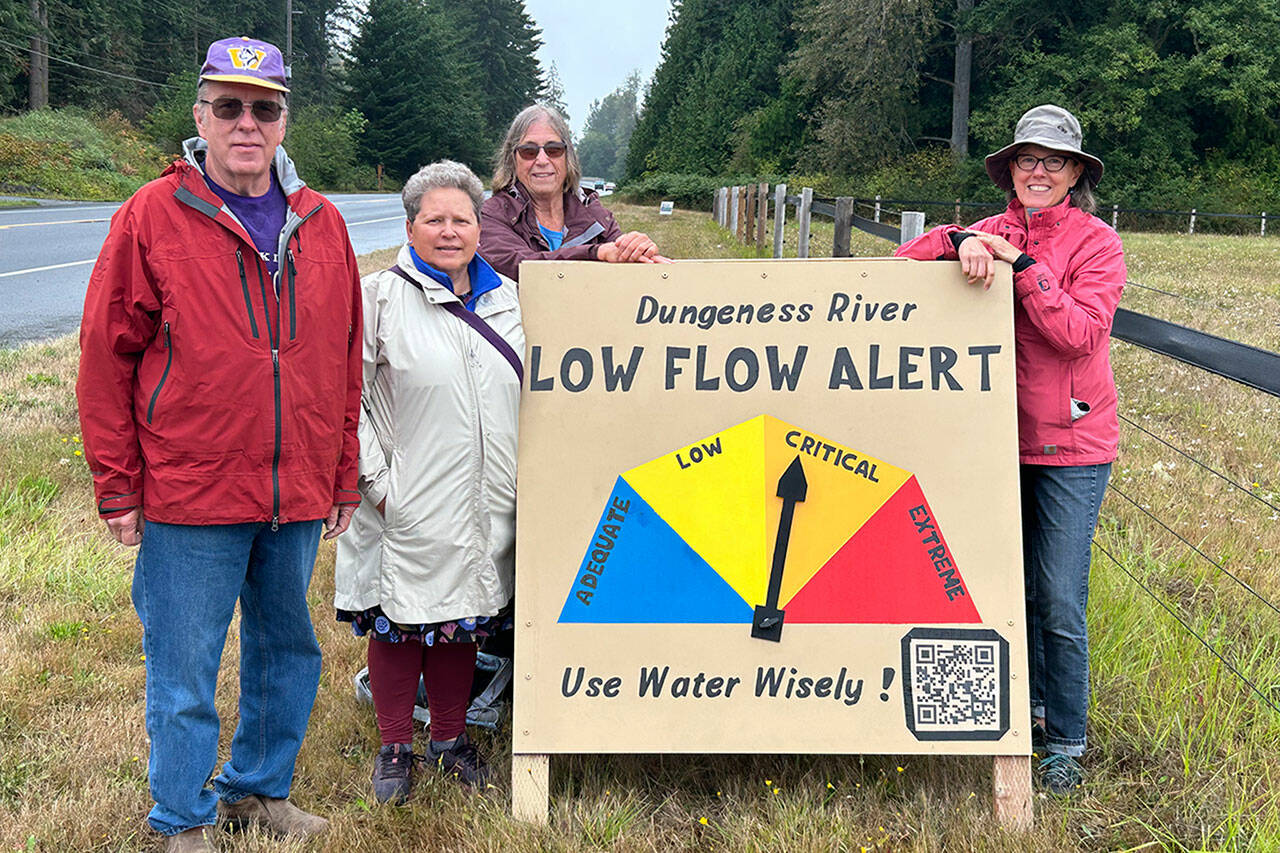A bit of precipitation in the last week has helped, but the Olympic Peninsula remains on alert for a shortage on water.
On April 16, Washington state issued a statewide drought declaration (with a few large city exceptions) as winter conditions were warmer than normal, leading to below-normal snowpack across basins. Both the Dungeness and Elwha Rivers are now experiencing lower flows than normal, and Clallam County’s Public Utility District (PUD) has declared Stage 2 and 3 drought responses for several water districts west of Sequim.
As state officials monitor water levels and encourage state residents to use water wisely, a committee with the Clallam County League of Women Voters has developed a “Low Flow Alert” sign pilot project for the Dungeness River.
“Our goal is to improve awareness that our water supplies are not unlimited – whether or not there are water use restrictions in place,” said Ann Soule, a member of the league’s Low Water Alert Pilot Project committee and retired hydrologist/water planning and policy professional.
The sign, located on private property along Olympic Highway with the landowner’s permission, will be updated each week with an arrow and four simple colors — green for low danger and succeeding colors of yellow, orange and red for lower river levels and more severe drought conditions — to let passers-by know how drought conditions are affecting the Dungeness.
The critical zone (orange) was set for when irrigation managers potentially have to cut back their diversions and when biologists start planning ways to facilitate migration of salmon through shallow channels.
See lwvcla.clubexpress.com/water for more criteria for the sign’s selected “zones.”
“This is giving people a chance to know about our water situation,” Soule told members of the Dungeness River Management Team on Aug. 14, as local and regional leaders discussed the current state of Washington’s drought situation and information those entities can share to help each other navigate the dry times.
The sign’s arrow, she said, will be adjusted according to the Dungeness River stream flow as read from the U.S. Geologic Survey’s flow gauge at River Mile 11.2. The values for each category were based in part on input from water managers in the Dungeness watershed.
An immediate action residents can take, Soule noted, is simply avoiding watering non-essential plants outdoors, particularly lawns.
Long-term actions to help ease drought conditions, she said, include using drought-tolerant plants, cultivating healthy soil and building a rain garden that controls standing water and runoff.
For more information, email to WaterStoryClallam@gmail.com.



